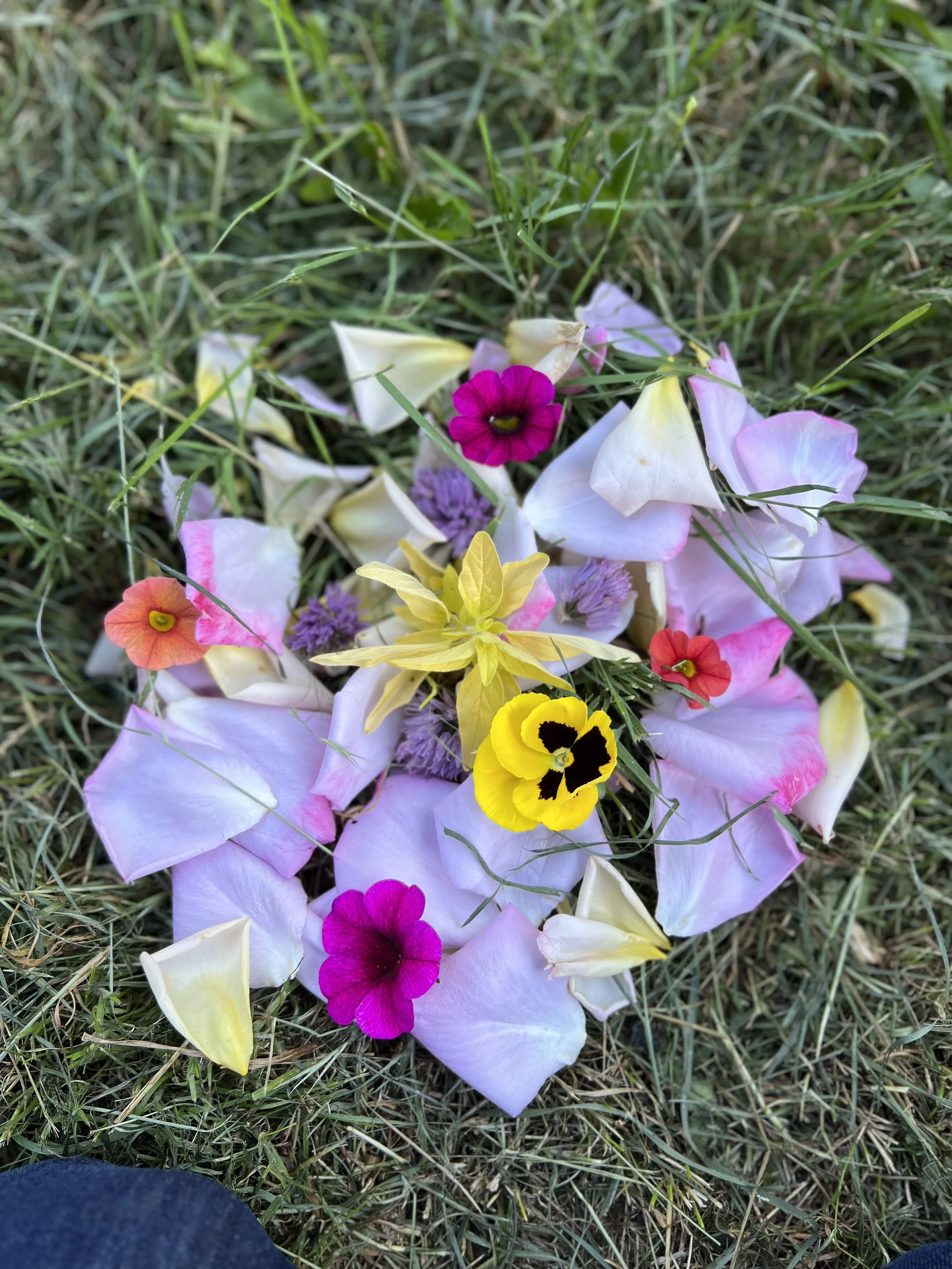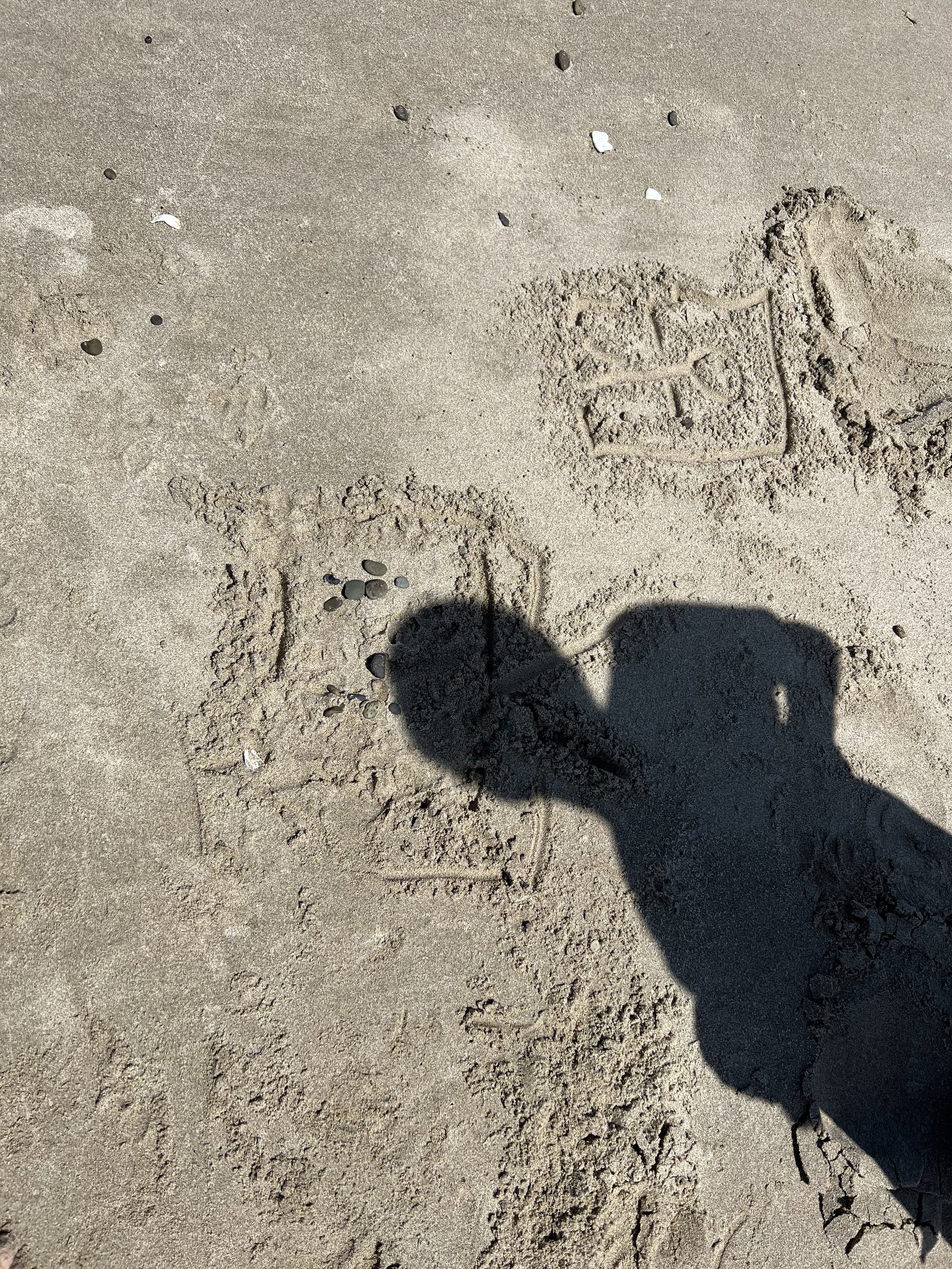Depth Psychotherapist Carl Jung described the shadow as the hidden, often unconscious aspects of ourselves—both the disowned “negative” traits we reject and the golden qualities we struggle to embrace. In the The Red Book, Jung wrote, "I must learn that the dregs of my thought, my dreams, are the speech of my soul." In poet Robert Bly’s book A Little Book on the Human Shadow: A Poetic Journey into the Dark Side of the Human Personality, Shadow Work, and the Importance of Confronting Our Hidden Self he encapsulates the shifting, shadowy parts of The Shadow in the image of “the long bag we drag behind us” that contains all the discarded parts of ourself. While we often think of the shadow as our repressed fears, rage, or shame, Jung and Bly also spoke of the golden shadow—the brilliance, creativity, or power we project onto others but struggle to own for ourselves.
In therapy, the shadow shows up in many ways: in recurring dreams, somatic symptoms, and spontaneous images that arise in active imagination, images in conversation. Working with it is not about doing away with but integration—learning to reclaim what has been disowned and find wholeness. After all, “doing away with” is how it got shoved into that bag to begin with!
The Shadow in Everyday Life
Our shadow – personal and collective– is there whether we have to tools and support to notice and work with it or not! When we feel like we are too much—too loud, too sensitive, too angry—or not enough—not smart enough, successful enough, or lovable enough—we are often confronting shadow material. The parts of ourselves that we learned were unacceptable or unworthy get pushed into the unconscious, only to resurface in our relationships, work, and inner dialogue. We also encounter the shadow in our emotional responses to others. When we feel intense anger or irritation toward someone, it can sometimes be because they embody a trait we reject in ourselves. Conversely, when we put someone on a pedestal, seeing them as especially brilliant, talented, or powerful, we may be projecting our golden shadow—qualities we possess but struggle to recognize.
When we look at our attachment patterns, we can experience our shadow as it shows up with our unconscious regard towards our own and other’s dependency needs. Parents often experience this in hyperdrive when we suddenly find ourselves annoyed, overwhelmed, or reacting to our children in ways we do not intentionally care to react towards our children.
On a collective level, shadow dynamics play out in political and cultural. The outrage we feel toward certain groups or ideologies can sometimes be a projection of our own disowned fears, desires, or unresolved wounds. Recognizing this doesn’t mean we ignore real injustices, but it allows us to engage with these issues with more self-awareness. Fairytales, movies, social trends can all tell us something about our individual and collective shadow.
The Shadow in Dreams
Dreams provide a direct pathway to the shadow, bringing forward hidden emotions, split-off parts of the psyche, or figures who challenge our self-image– they can even challenge our “false selves” that we have built up to be acceptable in social milieu. Through dream work we can engage with material that is otherwise unknown or too difficult to know directly in waking consciousness. Even if one can only recall fleeting images or fragments of dreams, potent encounters with shadow material are wrapped within these fragments. Something as simple as a dream color, a feeling, or a mysterious figure is enough to begin the work. Many client report they do not remember their dreams, continue reading for other imaginal and experiential ways to engage with shadow.
Somatic Awareness and the Shadow
The body is another gateway to shadow work. Unexplained tension, chronic pain, or visceral reactions can point to deeper layers of the psyche at work. By listening to these sensations rather than pushing them away, we may find that they hold emotions or memories we have long avoided. Somatic awareness practices allow us to bring curiosity to these experiences, gently inviting what has been hidden into conscious awareness. The long bag we drag behind us may be our embodied experience– showing up as fatigue, pain, fears of taking up space, fears of dancing… even holding the breath! Therapy that invites gentle somatic awareness and interventions can support our opening of this door and having an experience of embodied soul.
Active Imagination: Engaging the Shadow with Intention
Jungian active imagination involves dialoguing with unconscious material through creating images, writing, movement, sandplay. If this sounds a bit wild, it is actually a process we engage in daily, often unconsciously—it’s that “inner roommate” or inner dialogue that constantly runs in the background. Active imagination aims to engage this process with expansion and intention.
Instead of hearing just that one tired voice constantly putting us down or telling us everything is too risky, we develop a practice of listening to more parts of ourselves. By inviting shadow figures to emerge—whether from dreams, meditation, or spontaneous imagery—we shift from passive avoidance to active relationship. This process can be transformative: what once appeared threatening may reveal itself as a source of strength, insight, or creative energy.
Jung emphasized the power of active imagination, taking our dreams seriously, and engaging in creative dialogue. In a 1957 interview with Aniela Jaffé, he reflected: "The years... when I pursued the inner images, were the most important time of my life. Everything else is to be derived from this."
Active imagination can bring up a lot and is often began in a supportive therapeutic relationship with a therapist familiar with the process who can provide support, some guidance, and also be along for the ride.
Finding Center Through Sandplay Therapy
On a therapist as a human note, I have experienced the power of shadow work through sandplay therapy, painting images from my dreams, and engaging in active imagination. As I navigated my own individuation process, I went through a period of intense anxiety, feeling overwhelmed by everything.. In one therapy session, I placed an attractive stone in the center of the sand tray, which allowed me to identify with this stable core. As I worked with the imagery, I felt a shift—this center became an anchor from which I could observe everything around me that was chaotic and overwhelming. From that grounded place, I began to imagine what it might be like to observe the overwhelming as separate from myself. This experiential engagement in therapy allowed me to see how shadow work can lead to reclaiming power and beginning the transformational process. It was not just an intellectual idea but an embodied experience in the sand. It gave me a solid place to stand, turn, and have the choice to open that long bag I had been dragging behind me in a single, accessible and “bite sized” able to be integrated moment. Over time and with more work, I realized that the intense longing I had for others were traits I had pushed away in myself, and might nurture.. As poet Robert Bly wrote, "We spend our life until we're twenty deciding what parts of ourselves to put into the bag, and we spend the rest of our lives trying to get them out again." Therapy is the space to practice this coming to see the long bag, and piece by piece, unpacking it.









